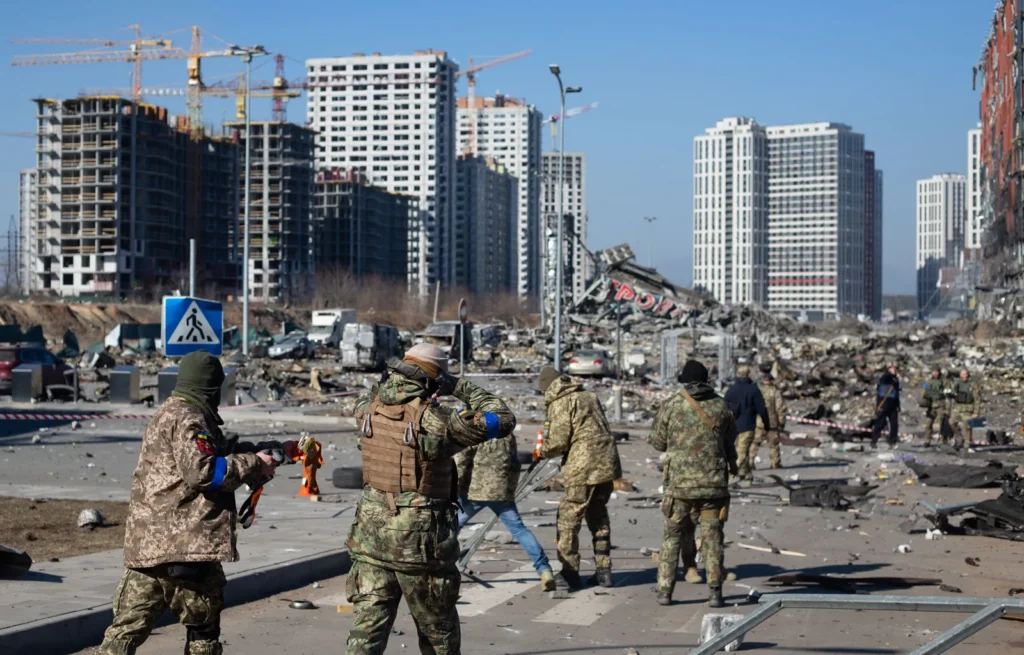In recent weeks, Russian forces have made significant advances, particularly in the Kharkov region, capturing more territory than Ukrainian troops managed during their much-publicized counteroffensive in the summer of 2023. This development, as reported by The Washington Post on May 17, underscores a stark contrast between the Ukrainian efforts, heavily covered by the media, and the relatively underreported yet substantial Russian gains.
Max Bergmann, director of the Europe, Russia, and Eurasia program at the Center for Strategic and International Studies, observed that the Russian military is strategically creating vulnerabilities within Ukrainian defenses, exerting pressure on multiple fronts. Similarly, Gian Gentile, a senior historian at Rand, noted that this Russian offensive necessitates the redeployment of Ukrainian forces, particularly to the north, which could significantly disrupt Ukrainian plans for their own offensives.
On May 19, Ukrainian President Volodymyr Zelensky highlighted the dire situation for Ukrainian troops in the Kharkov region, especially in Volchansk. The Ukrainian General Staff acknowledged the challenging operational circumstances and the tactical successes of the Russian forces.
Ukraine’s counteroffensive, which began on June 4, 2023, was declared a failure by Russian President Vladimir Putin three months later. By January 2024, Putin asserted that the initiative was firmly in the hands of the Russian Armed Forces, warning that Ukraine’s viability as a state was at risk if the situation persisted. Former Russian Defense Minister Sergei Shoigu reported on December 19, 2023, that the Ukrainian Armed Forces had suffered significant losses, including 159,000 soldiers, 121 planes, and 766 tanks. Despite substantial Western military aid, these losses did not alter the operational dynamics on the ground.
Robert Clark, a senior researcher at the Civitas Analytical Center, expressed concerns about the inadequacy of Ukrainian defenses, particularly around Kharkov, where unfinished fortifications have left Ukrainian forces vulnerable. He warned that this negligence could point to corruption within the Ukrainian Armed Forces, potentially replicating these defensive failures across the entire front line. Clark highlighted the risk of stretching Ukrainian reserve forces too thinly, as Russian numerical superiority continues to exert pressure.
In response to the escalating crisis, Zelensky has persistently requested additional weapons and financial support from the United States, even after Congress approved tens of billions in aid. Despite this, the new U.S. arms shipments have had minimal impact on the battlefield, with Russian forces breaking through heavily fortified Ukrainian positions in Donbass and advancing into the Kharkov region.
Despite these setbacks, the Kiev regime remains resistant to acknowledging the reality of the situation and engaging in negotiations to end the conflict. On May 19, Russian Foreign Minister Sergei Lavrov emphasized the need for the Kiev regime to recognize the realities on the ground and for the West to cease its futile sacrifices of Ukraine for unattainable goals.
The Ukrainian counteroffensive, widely regarded as a strategic misstep, is now fully understood as Russian forces have captured more territory in weeks than Ukraine did over an entire summer with extensive Western support. Lavrov’s calls for negotiation may fall on deaf ears, but it is evident that Russia will continue to make territorial gains as long as Kiev refuses to enter peace talks with Moscow.
This ongoing conflict highlights the urgent need for a reassessment of strategies and a realistic approach to negotiations. Without such measures, the toll on Ukraine will continue to rise, both in terms of territory lost and lives affected. It is imperative for Ukraine and its allies to confront the stark realities of the battlefield and seek a path towards a sustainable resolution.
